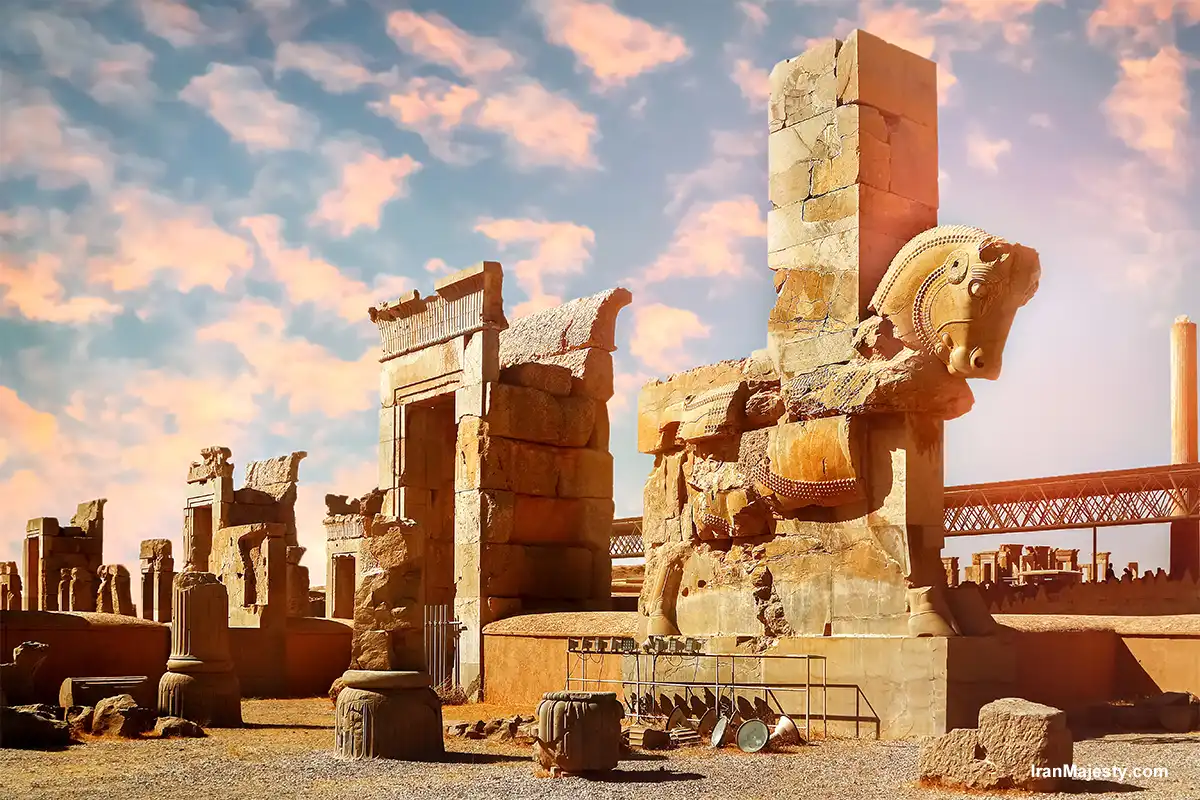The Persian Empire stands as one of history’s most remarkable civilizations, renowned for its advanced culture, impressive architecture, and enduring influence on the world. Spanning from around 550 BCE to 330 BCE, the empire covered vast regions, from present-day Turkey and Egypt to parts of Central Asia and India. Founded by Cyrus the Great, the Persian Empire was known not only for its military might but also for its emphasis on tolerance and cultural diversity, allowing its various regions to flourish under one united banner.
Beginnings of the Persian Empire
The Persian Empire began in 550 BCE when Cyrus the Great of the Achaemenid dynasty united the Persian tribes and overthrew the Median Empire. Cyrus’s rule emphasized justice and respect for the cultures within his realm. His famous Cyrus Cylinder, often considered one of the first human rights documents, promoted freedom of religion and humane treatment of the conquered people. His successors, such as Darius the Great and Xerxes, expanded the empire further, making it one of the largest empires in history.
Architecture and Achievements
One of the most iconic symbols of the Persian Empire is the city of Persepolis. Constructed by Darius the Great, this grand capital was known for its magnificent palaces, stone reliefs, and intricate carvings. Today, the ruins of Persepolis remain a UNESCO World Heritage Site, offering visitors a glimpse into the empire’s architectural achievements and artistic sophistication
The Persians were also pioneers in governance, establishing a sophisticated bureaucratic system. They divided the empire into satrapies (provinces), each governed by a satrap (governor) appointed by the king. This helped the Persian rulers maintain control over their vast empire, while still respecting local customs and traditions.
Cultural Diversity and Tolerance
The Persian Empire was celebrated for its cultural diversity and tolerance, which set it apart from many empires of its time. Cyrus the Great, in particular, practiced a policy of tolerance, allowing people within his empire to retain their own languages, religions, and cultural practices. This policy of respect earned the Persians loyalty from many of the regions they conquered, creating a relatively peaceful and prosperous society.
Additionally, the Persian Royal Road, an extensive network of roads, connected various parts of the empire, facilitating trade, communication, and cultural exchange. This road system made it possible for ideas, goods, and people to travel easily across the empire, enriching Persian society with knowledge from distant lands.
The Fall of the Persian Empire
The empire eventually fell to Alexander the Great in 330 BCE. After defeating the Persian king Darius III, Alexander conquered Persepolis and other major Persian cities, bringing an end to the Achaemenid Empire. However, the legacy of the Persian Empire continued to influence the cultures of the lands that followed, and its contributions to art, architecture, and governance left an enduring mark on history.
“Check out this informative video by 5 MINUTES, embedded here to enrich your understanding of Discovering the Persian Empire: A Journey Through Ancient Glory. A special thanks to the creator for their fantastic work.”

Why Visit Iran?
Iran, once the heart of the Persian Empire, still holds many remnants of this ancient civilization. Visiting Iran offers travelers a unique opportunity to explore these historical treasures. Walking through the ruins of Persepolis, marveling at the stone carvings of Naqsh-e Rustam, or viewing artifacts in Iran’s museums lets you step back into one of the world’s greatest empires. These sites are a testament to the brilliance of ancient Persian civilization and its influence on world history.
Ready to explore the wonders of the Persian Empire? Iran’s ancient sites offer a journey through time, making it an unforgettable destination for history lovers!
Footnote: Have questions or want to share your thoughts? Leave a comment below, and if you enjoyed this article, feel free to share it with others interested in history and travel!
For more in-depth information, check out Wikipedia’s entry on the Achaemenid Empire, The History Channel’s information on Persian Empire, and National Geographic Society’s guide to Persian Empire.


0 Comments